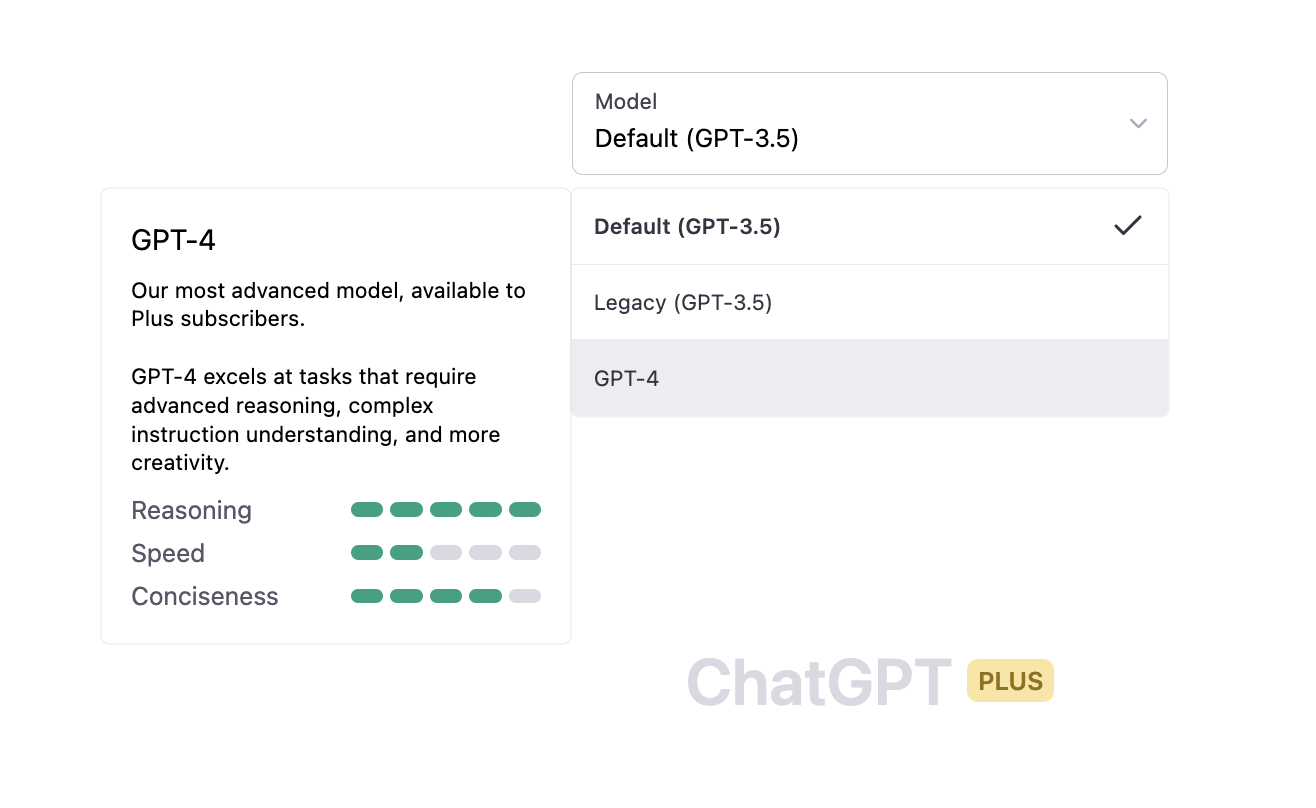You have likely already heard about ChatGPT, and are possibly playing around with it already. That was version 3.5. Today, OpenAI released GPT 4. This is big news!
I'll go through the key improvements in this article and explain their potential impact to language educators. If you're new to ChatGPT and the latest AI technology, check out my introductory article here, Why Should Language Businesses Care About ChatGPT?
The key improvements in layman's terms are:
- GPT-4 is a lot smarter
- GPT-4 knows more true facts:
- GPT-4 can understand images
- GPT-4 has a longer memory
- GPT-4 can better match your personality
- You have to pay for GPT-4

GPT-4 is a lot smarter
GPT 4 has been designed and trained with more data, which means it has learned more about the world and how to understand and respond to questions. This makes it much better at answering questions and solving problems compared to GPT 3.5.
The extra knowledge and improved understanding help GPT-4 provide more accurate and helpful answers to a wider variety of questions.
An impressive example to indicate the difference between GTP-4 and GPT-3.5 is that GPT-4 scores around the top 10% on a simulated bar exam, while GPT-3.5's score was around the bottom 10%. Let that sink in a little... GPT-4 scores around the top 10% on a simulated bar exam.
GPT-4 is better at handling nuanced instructions and complex tasks, making it more reliable and creative than its predecessor, GPT-3.5. This makes it likely significantly better at grading and assessment.
This should give you more confidence that you'll experience cringe-worthy teaching moments in your class. This leads to the second big advantage...
GPT-4 knows more true facts
Because GPT-4 has been trained with more information, it has a better understanding of true facts and details about various topics. In fact it is 40% more likely to produce factual responses than GPT-3.
This means that when you ask ChatGPT questions, it is more likely to provide correct and reliable information. Humans will always be needed to review the content, as ChatGPT is not faultless, but the technology can really fast-track the process of creating curriculum and personalising content.

Image AI auto-generated by DALL-E.
GPT-4 can understand images
One of the exciting new features of GPT-4 is its ability to make sense of images. It can look at pictures and understand what is happening in them, recognize objects, and even describe scenes. This skill allows GPT-4 to help you with tasks involving images, such as describing a picture, answering questions about a photo, or even creating a story based on an image. GPT 3.5, on the other hand, can only work with text and cannot understand or discuss pictures.
This could open up a lot of opportunities for teachers and I think we're just chipping at the surface of how helpful this can be in language education.
Note: The UI for uploading images into ChatGPT 4 is not yet available.
GPT-4 has a longer memory
This TechCrunch article explains this well. While GPT-3.5 could remember about 4-5 pages of a book, GPT-4 can remember up to 50 pages! That means it can remember things from earlier in a conversation or a story, even if it was a long time ago.
This means that you can provide the AI more context, rely on previous prompts and GPT-4 will understand and help you better.
GPT-4 can better match your personality
GPT-4 can change how it talks and acts to match your personality or the personality you want. This is called "steerability." Sometimes you might want GPT-4 to be a funny storyteller, and other times you might want it to be a kind helper. With GPT-4, you can ask it to change its personality to better help you with whatever you need.
This could be particularly helpful in personalising language content for a student or to "steer" your ChatGPT to act or sound more like you. If ChatGPT opens the UI to set your "personality" in the settings it will make creating content on the fly in your online classes, so much faster and more natural.
You have to pay for GPT-4
GPT-4 is a significant upgrade. It's got over 100 million users to try, and love, ChatGPT (3.5). Now the only way to access GPT-4 is through a ChatGPT Plus subscription.
That said, Microsoft Bing is already powered by GPT-4, and connected to the entire internet, and Google's is lesser-known Bard, released on 21 March, will will use a similar technology. These have free access and it's only a matter of time before a much broader range of language teachers and language schools can from the latest AI advancements through the seamless integration into Microsoft (Word, Excel, etc.) and free Google products (Docs, Sheets, etc.).
Note: On 23 March, OpenAI announced that it will host two plugins, including one to browse the internet , which will soon allow teachers and curriculum designers to tap into more recent data, knowledge and events (previously the training data was limited to data up to September 2021).
How to Ride The Teacher-bot Wave
Looking at the pricing of the GPT-4 API and 'relative' ease of creating a chatbot powered by ChatGPT, it is hard not to imagine that there will be a rapid proliferation of good, cheap "teacher bots".
The thing to remember is that while ChatGPT can mimic human language, it can't replicate the human-to-human connection between teacher and student.
I do not think teacher-bots are going to replace language teachers but I think its very likely that many students will like to practice with a teacher-bot. While the teacher-bots will be better than they were, and provide a far more personal learning experience if done well, they will still only be a tool and keep a student motivated for only so long.
In writing my latest book, LangTech, and talking with dozens of language education technology leaders, the number one problem that technology has not (and is still not yet) able to solve is motivation. So just as many language-app users start with an app and transition to a language teacher, many teacher-bot users will start there and eventually reach out for a language teacher when the time is right.
So rather than worrying about the potential threats of new AI technology, let's spend our energy figuring out how we can create value for our students and businesses by leveraging this ground-breaking technology.
P.S. This article was co-authored with ChatGPT-4.
P.P.S. If you're interested in ordering the LangTech book, you can put your name down here to be notified as soon as the book is available.

 CEO of LearnCube
CEO of LearnCube
